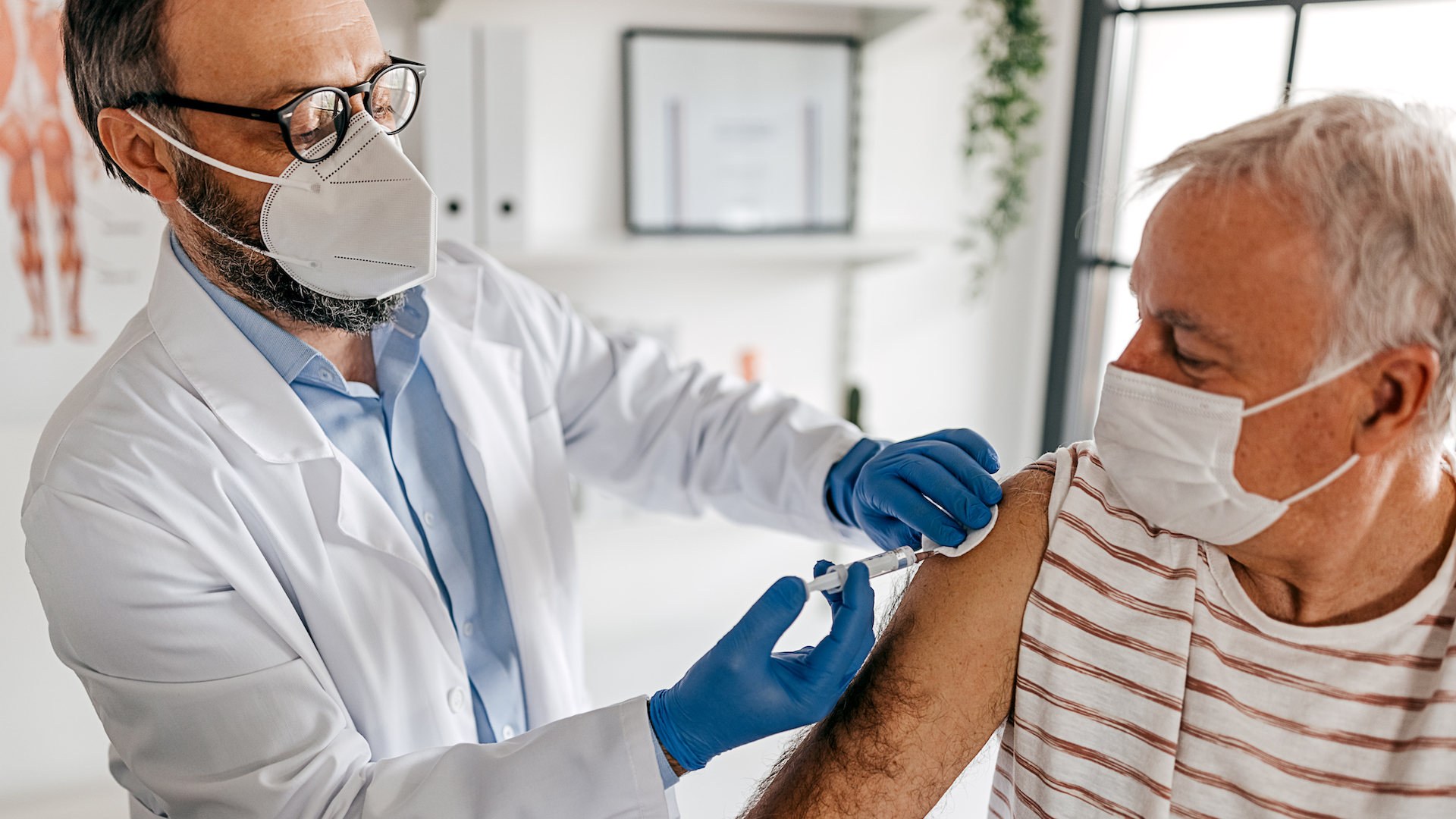
An experimental two-in-one vaccine triggered strong immune responses against both the flu and SARS-CoV-2, the virus behind COVID-19, in an advanced clinical trial that included adults ages 50 and older.
The ongoing clinical trial pits this new combination shot, called mRNA-1083, against several licensed vaccines that protect against either COVID-19 or the flu. Compared with these separate vaccines, the combo shot produced "significantly higher immune responses" to three subtypes of flu and to the coronavirus, the pharmaceutical company Moderna, which developed the vaccine, announced Monday (June 10).
These results haven't yet been reviewed by scientists outside of Moderna. The company plans to present the data at an upcoming medical conference and to publish the results in a scientific journal.
Moderna representatives told news outlets that the company aspires to have the new shot approved by fall 2025 — so it won't be available by this flu season, but it might be by the next. Pfizer-BioNTech and Novavax are also working on their own COVID-flu vaccines, but Moderna is the first to release late-stage clinical trial data.
Related: A branch of the flu family tree has died and won't be included in future US vaccines
People currently have to get their annual flu shots and updated COVID-19 vaccines separately. One major benefit of a combination vaccine would be that it would streamline that vaccination process, boosting coverage through convenience, Dr. Francesca Ceddia, Moderna's chief medical affairs officer, wrote in a Moderna blog post. Such a shot could also free up doctors' and pharmacists' time by cutting the number of individual shots they'd have to give, she wrote.
Beyond convenience, though, it's possible that the new vaccine could be more protective than the current vaccines that are given individually, Moderna's early data hint.
"When we think about the combination vaccine, we often only think about the element of convenience, one shot instead of two," Ceddia told CNN. "But what is really, really breakthrough is the fact that you not only offer that advantage, you also offer the proof of clinical benefit."
The combination vaccine includes two components, both made of a genetic molecule called mRNA. Once inside the human body, mRNA instructs human cells to build specific proteins — in this case, proteins found on the surface of SARS-CoV-2 and influenza viruses. The new vaccine builds upon the Nobel Prize-winning technology used to develop the first COVID-19 vaccines. Since those shots were released, mRNA has been used to develop experimental treatments and vaccines for many diseases, including deadly brain cancers and ultra-rare genetic disorders.
The ongoing trial is testing the new vaccine in two groups of roughly 4,000 adults each: one group of people ages 65 and up, and one group of 50- to 64-year-olds. Participants in the older group received either the new shot alone or Moderna's old COVID-19 vaccine, Spikevax, along with a high-dose flu shot that's recommended to older adults. Participants in the younger group got either the new vaccine or Spikevax and a standard-dose flu shot.
In both age groups, the combo vaccine elicited a superior immune response against a variant of SARS-CoV-2 called omicron XBB.1.5; two types of influenza A virus called H1N1 and H3N2; and a type of influenza B virus known as the Victoria lineage. The researchers measured this immune protection in terms of the number of protective antibodies that appeared in people's blood.
(Notably, newer versions of omicron have now overtaken XBB.1.5, so the new vaccine's effectiveness against those variants isn't yet known.)
The most common side effects of the new shot included pain at the injection site, fatigue, muscle aches and headaches. These side effects also show up with existing COVID-19 and flu vaccines. However, Moderna hasn't released the full details of the trial so it's not yet known whether the rate of side effects differs between the old and new vaccines.
Between October 2023 and June 2024, up to 810,000 people were hospitalized for influenza in the U.S., and up to 71,000 people died from the infection, the CDC estimates based on preliminary data; firmer figures will be released in coming months. In addition, data recently presented to the Food and Drug Administration suggest that more than 500,000 were hospitalized for COVID-19, and 40,000 died from it, during last autumn and winter, CNN reported.
This past season, the rate of flu vaccination far outpaced that for COVID-19 vaccination among adults, so some experts hope that introducing combination vaccines could help pull that rate up. For now, Moderna is working with regulators to approve the new vaccine for adults but the company hasn't noted when the shot might be tested in younger groups.
This article is for informational purposes only and is not meant to offer medical advice.
Ever wonder why some people build muscle more easily than others or why freckles come out in the sun? Send us your questions about how the human body works to community@livescience.com with the subject line "Health Desk Q," and you may see your question answered on the website!







